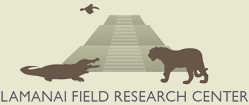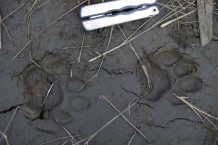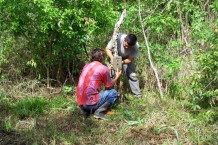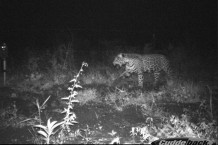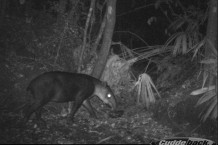Community-based Wild Cat Conservation
Belize is home to five species of wild cats: the jaguar, puma, ocelot, jaguarundi, and margay. In areas where people and wildlife share a landscape, these large carnivores are often in conflict with humans because of socio-economic pressures, a lack of awareness of the ecological role of carnivores, and a limited appreciation for wildlife conservation.
After two jaguars were shot in response to six calves being killed, Lamanai Field Research Center created a program to pay local landowners in the New River area for photos of live cats and their prey. We go out with each landowner and set up camera traps at locations of their choosing, usually where they have seen cats or cat tracks. Every two weeks, the landowner checks the cameras and brings the memory cards to our office where we review the findings on the spot.
Our growing photo bank contains photos of all five species of cats, as well as sightings of peccaries, deer, tayras, coatimundis, the great curassow and Belize’s national animal, Baird’s Tapir, to name a few. After identifying individual cats using spot patterns, scars, and external parasites, we have discovered more cats than expected in the area.
The next phase of the project involves capturing the three smaller species of cats and placing radio collars on them to track their movement and activity patterns. With these data we will be able to determine how each individual moves through and uses this human-dominated landscape. These data will provide information to communities about how to effectively coexist with wild cats and increase the conservation value of their lands while minimizing negative impacts to their livelihoods.
